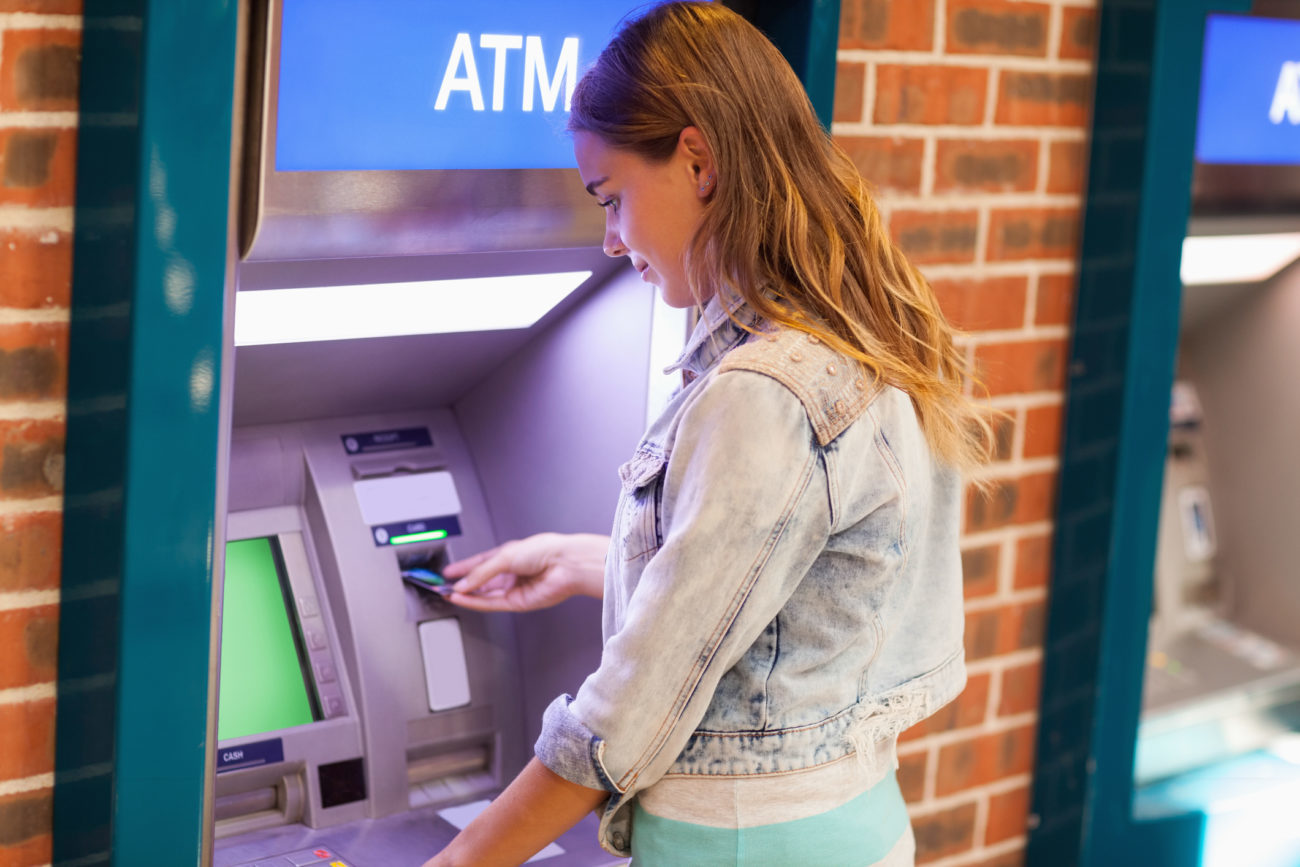Is It Possible to Get a Small Personal Loan?

Sometimes, you need a little help with your cash flow. You might not need a large amount of money — perhaps less than $5,000.
Getting a small personal loan can be one way to get the cash you need without paying a hefty interest rate or dealing with the uncertainty that comes with credit cards.
Let’s take a look at what you need to know when looking for the best small personal loans.
What Is a Small Personal Loan?
A small personal loan is one that is generally $5,000 or less. In some cases, you might be able to get a personal loan for as little as $1,500.
Small personal loans are usually fixed installment loans, meaning you make regular payments until the debt is paid off. These payments can be made weekly or monthly. Additionally, a small personal loan is often marked by interest rates that are often lower than what you’d see with a payday loan or even by using a credit card.
Who Should Use a Small Personal Loan?
Depending on your situation a small personal loan can make a lot of sense. This can be a good choice for those who are making a larger purchase or holding a special event and want some flexibility in repaying the debt while maintaining their cash flow.
For example, you might get a small personal loan to purchase a new refrigerator or washer/dryer set. A small personal loan can also be used for an event like a wedding. Depending on the situation, you can also use a personal loan in an emergency, to help you cover various costs related to out-of-cost medical expenses, or for a vehicle repair.
With a personal loan, you know what to expect in terms of repayment. You usually have between two and five years to repay the loan, making the payments more manageable when your budget is tight.
Personal loans vs. credit cards
When deciding whether to use a personal loan, you might also be looking at credit cards. If you have good credit, however, you might be able to get a lower interest rate on a personal loan than you would with a credit card. Plus, if you need more than $500 or $1,000, putting that amount on your credit card might not make sense — especially if you don’t have enough of a credit limit to support that amount.
Additionally, credit cards are revolving, so you have different payment amounts each month, depending on your balance and interest rate. This can make it harder to budget for payments when you put these expenses on a credit card.
If you can get a 0% APR credit card that allows you a set time period before interest starts, this can be an advantage. However, you might not have as much time. If you can’t pay off your balance in six to 18 months, you could potentially end up with big interest payments later.
A personal loan gives you stability, and usually a longer term to pay off the debt, without a big change in interest payments.
Personal loans vs. payday loans
Payday loans, also called cash advance loans, can be easier to get in some instances. You don’t usually need a credit check. All you need is a checking account. Once you get the payday loan, the lender charges you a fee and then automatically takes the money from your account on or just after your next payday.
If you want to extend the loan, you pay another fee. When translated into an APR, however, payday loans can have very high percentages and become very costly, especially if you just keep paying the fee to renew. You never pay down your principal, but you keep making periodic fee payments to extend the loan.
Payday loans can be very dangerous and costly in some circumstances. If you need quick cash and don’t think you can get a personal loan in enough time, and you know that you won’t extend the loan, a payday loan can work, but it’s usually not the top choice.
Compare personal loans and see what personal loan rates lenders have available.
How to Compare Small Personal Loan Offers
When deciding on which lender to choose for your small personal loan, it’s important to compare different terms and conditions. Here are some things to consider as you compare small personal loans:
APR
Your APR is how much you’ll pay in interest (including fees). Lenders vary in their APRs, so you need to look for the lowest possible rate. Realize, though, that your rate is also based on your credit. The better your credit score, the lower your interest rate is likely to be.
Terms
Look for a lender that has a loan term that works with your budget. Some lenders only offer loan terms of 24 or 36 months. If you need a longer term, you might want to look for a lender that offers up to 60 months. In general, a longer term means you’ll pay more in interest. However, your payments will be smaller, which might fit better with your budget.
Minimum loan amount
Don’t borrow more than you need or can afford. If you only need $1,500, don’t use a lender that has a $2,000 minimum amount.
Fees
Check into fees. Some lenders charge origination fees of between 1% and 8% of your loan amount. Other lenders don’t charge these types of fees. Look for the lowest fees possible. Additionally, watch out for prepayment penalties. You don’t want to be penalized for paying off your loan early.
Funding speed
Some small personal loans take days to get to your account. Other lenders can offer funding within one business day. If you need money fast, make sure to choose a lender that meets your needs.
Customer support
Check to see that you can connect to the lender in a way that’s comfortable for you. Also, pay attention to how easy it is to use the website, make payments, and manage your balance.
How to Get a Personal Loan
If you decide you want a personal loan, you will need to go through the process of applying with a lender that offers small loans. Each lender has its own requirements, so you will need to compare lenders and offers. After you’ve done your research, you can move forward with a lender that you prefer.
Check to see if you qualify for a small personal loan
First, you need to establish that you qualify for a personal loan. In general, lenders for small personal loans will look at the following:
Credit
Your credit score will be used to determine your eligibility for most personal loans, including small personal loans. Some lenders offer personal loans for borrowers with bad credit and credit score requirements as low as 580, but others might require at least a 650. Check with the lender to see what you qualify for.
Income
Most small personal lenders want to know that you can make your payments on time. They might need proof of income to determine whether you can handle the payments.
Other requirements
Depending on the lender, you might not have access to loans if you live in specific states. There might be other requirements, such as having a job for a set period of time before you get the loan.
Many lenders have their requirements on their website, or they can take some of your basic info and see if you qualify. The pre-qualification process can help you compare rates and terms, and see if you meet the basic conditions to get a small personal loan.
Apply for the loan
After determining whether you qualify, you go through the application process. Many small personal lenders make it easy to fill out your information online and you can receive a decision in minutes. Some of the information you need to provide when you apply for a personal loan includes:
- Name
- Address
- Phone number
- Driver’s license number (or another ID number)
- Income
- Desired amount
- Desired term
- Bank routing and account numbers to set up auto-withdrawals
You might also need to upload documents that support your application. You might need to provide bank account statements or paystubs. In some cases, though, the lender can simply connect to your bank account and see the transactions.
Once you’ve provided all the information, you’ll be offered a loan.
Sign the paperwork and provide account information
After you receive your loan offer, read through it to decide if you want to accept it. Make sure you understand what fees you’ll be paying, as well as the terms of repayment. In many cases, you’ll be required to provide information that allows the lender to simply withdraw your payments automatically from your account each month.
Once you’ve reviewed the information, sign the paperwork. You can usually sign electronically. After you finish the paperwork, many lenders can deposit the funds into your account within one to three business days.
Consider a signature personal loan from your bank
In some cases, you can get a personal loan for as little as $250, $300, or $500 by going to your bank.
Rather than looking into a small personal lender, your bank might offer what’s called a signature loan. This is a small personal loan based on your relationship with the bank that can be paid back over a short period of time.
In some cases, the bank might only require that you be able to pay in small installments over three to six months, rather than going through the process of being approved for a loan.
Repay your loan
Once you have your loan, make sure you pay on time and in full. Autopay can help you with this. Create a budget that accounts for your loan repayment and stay on top of your payments to avoid issues in the future — including reductions in your credit score.
Small Personal Loan Examples
Here are some different examples of what you might end up with, depending on the amount, term length, and APR.
As you can see, the monthly payments on these different loans are about the same, but how much is ultimately repaid over time depends on the APR and the term length. With a lower APR, a higher amount and longer term can result in more paid in interest.
However, if cash flow is your main concern, you might be willing to pay a higher amount in interest over time if you’re able to meet your financial management goals.
Pros and Cons of Small Personal Loans
Before you decide to get a small personal loan, make sure you weigh the pros and cons. You want to make a decision that makes sense for your individual financial situation. Here are the things to consider before you move forward.
Small Personal Loan FAQs
What is a small personal loan?
Most small personal loans are for amounts of $5,000 or less. They are usually unsecured and come with fixed, monthly payments and a fixed interest rate.
Where can you get small personal loans?
Small personal loans are usually available through online lenders. They can also be available at banks and credit unions. Compare different offers to find the loan that works best for you.
How can I qualify for a small personal loan?
You’re likely to get the best terms for a small personal loan when you have good credit and adequate income. However, there are lenders that offer small personal loans to those with poor credit.
Bottom Line
If you need a relatively small amount of money for a major planned purchase or to tide you over in an emergency, a small personal loan can provide you with a way to get the money you need quickly. Carefully consider your options and look for a loan that meets your needs and your budget.











